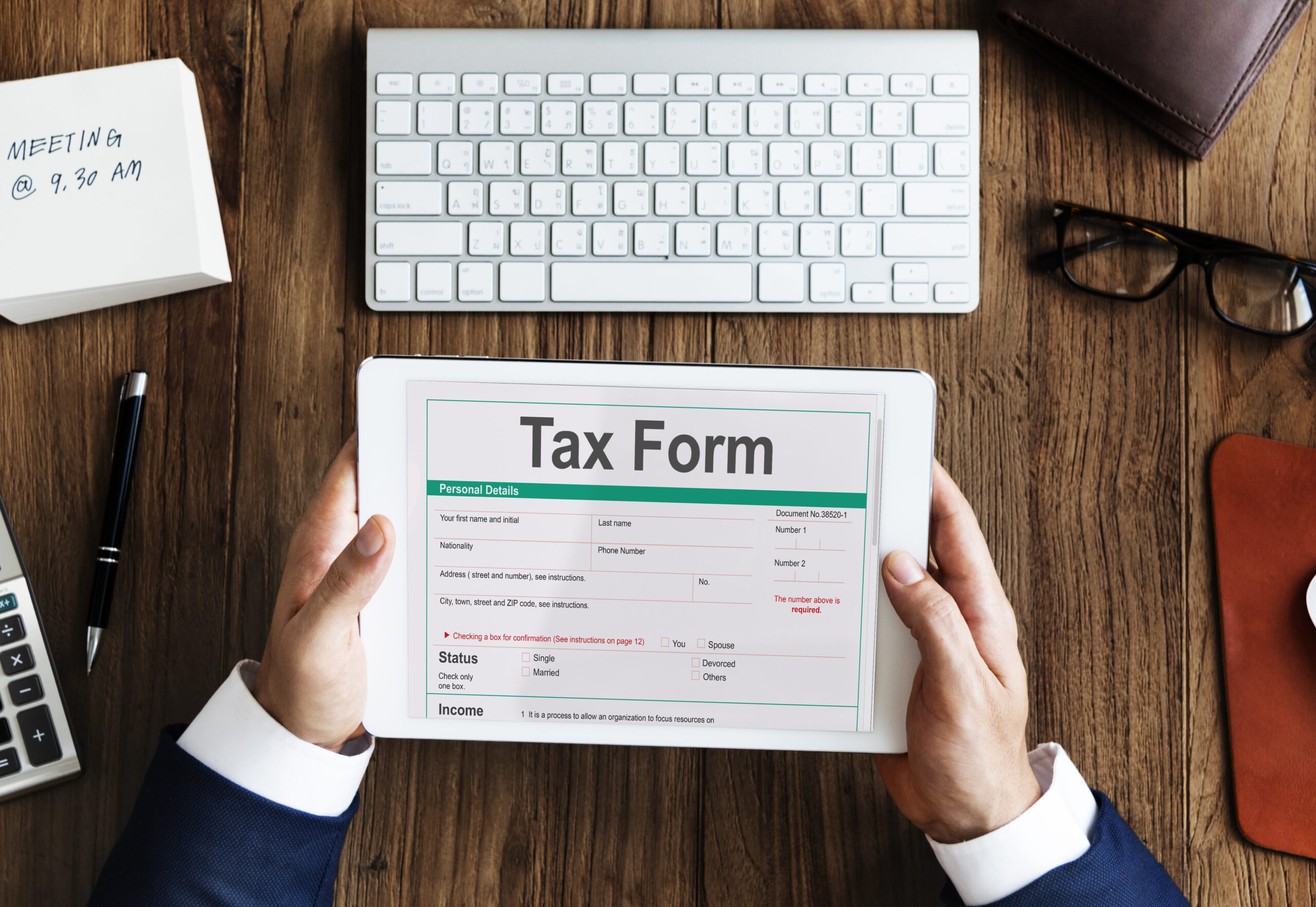Every year, approximately 7 million U.S. taxpayers do not file their required income tax returns, which poses a significant compliance challenge with serious repercussions. Failing to file taxes for several years can result in severe consequences from the IRS, including substantial penalties and accruing interest charges. Life circumstances like illness or disorganization can sometimes prevent people from filing and paying taxes on time. However, the IRS views not filing tax returns as a major issue.
The good news is that if you have unfiled tax returns from previous years, there are steps you can take to correct the situation and get back into compliance.
This blog helps you resolve unfiled taxes for several years, explaining the consequences of not filing and outlining the necessary steps tailored to your situation.
If you have a question in mind, like, I haven’t filed taxes in 5 years, then this blog is for you. Learn how to get back into good standing with the IRS, avoid further penalties, and properly submit overdue returns with the help of an experienced tax professional.
The Consequences of Failing to File Your Taxes
Not filing your taxes on time leads to expensive penalties and interest charges from the IRS. This section explains the potential financial costs you may face, which can really add up over time.
Increased Financial Costs
Not filing your taxes on time can lead to increased costs due to penalties and interest:
- Failure to File Penalty: If you miss the deadline, the Internal Revenue Service (IRS) charges a penalty of 5% of the unpaid taxes for each month or part of a month that a tax return is late. The penalty can accumulate up to a maximum of 25% of your total tax due.
- Failure to Pay Penalty: Alongside the failure to file a penalty, if you don’t pay the taxes you owe by the due date, you’ll incur a failure to pay the penalty. This penalty continues to accrue until the tax is paid.
- Interest Charges: The IRS also charges interest on both unpaid taxes and penalties, starting from the due date of the return. The current interest rate is 8% for the first two quarters of 2024. This interest can compound, significantly increasing the total amount owed over time.
If the IRS owes you a refund, there is no penalty for filing late. However, you must file a return within three years of the original due date to claim your refund. Failing to file within this window means you forfeit your right to the refund.
Risk of Criminal Charges
Failing to file your tax return can lead to serious legal consequences:
- Criminal Charges: While uncommon, you can face criminal charges for not filing a tax return. Potential penalties include significant fines and possibly imprisonment.
- Statute of Limitations for Prosecution: The IRS has up to six years from the due date of the tax return to initiate criminal charges for tax evasion.
- Voluntary Compliance: Taxpayers who voluntarily file their overdue tax returns are generally not pursued criminally. This demonstrates a good faith effort to comply with tax laws.
Life Circumstances and Non-Filing
Life events such as severe illnesses or a death in the family can disrupt normal processes, including tax filing. However, it’s important to address and resolve any missed filings as soon as possible to prevent further complications.
The longer you wait to file your taxes after missing a deadline, the higher the penalties and the greater the risk of legal consequences. It’s crucial to take action and either file your taxes or consult with a tax professional if you’re unable to do so yourself.
Is There a Limit on How Long You Can Go Without Filing Taxes?
It may appear that tax agencies have forgotten old, unfiled tax returns, but that is not the case. Here’s what you need to know about the time limits on tax collection:
- No Time Limit to Initiate Collection: The IRS does not have a specific time limit to begin collecting taxes, penalties, or interest for the years you didn’t file your taxes. This means you can still be liable for these debts well into the future.
- 10-Year Collection Window After Filing: Once you file your taxes, the IRS has a 10-year window to collect any taxes you owe. This time limit starts from the date you file the overdue tax return.
- State Tax Collection Rules: State tax agencies operate under their own sets of rules, which can vary. In many cases, states may have longer periods than the IRS to pursue tax collection.
It’s important to understand that merely avoiding filing doesn’t mean the debt goes away or that the IRS or state tax agency will forget about it. If you have unfiled tax returns, it’s advisable to address the IRS as soon as possible to avoid extended liability for taxes, penalties, and interest.
What Should I Do If I Haven’t Filed Taxes in 5 Years?
If you haven’t filed taxes in years or never filed taxes before, taking action now is essential to prevent increasing penalties and potential legal issues, helping you regain control of your financial health.
Figure Out Which Years You Need to File
Before you can catch up on unfiled tax returns, it’s essential to determine for which years you are required to file. Here’s how to identify those years:
- Identify Missed Years: Start by listing the years for which you haven’t filed. It’s common to overlook a year, especially if you’ve missed several filing deadlines.
- Check Filing Requirements: Not everyone needs to file a tax return every year. The requirement to file depends on factors like your income level, filing status, and age. Visit the IRS website to find the specific income thresholds for each year you missed. These thresholds are the minimum income levels that require you to file a tax return.
Find the Tax Forms for the Unfiled Years
When you’re ready to tackle filing your back taxes, you’ll need to obtain the correct tax forms for each specific year you missed. It’s important to use the right forms for each year because tax laws and the forms themselves can change from one year to the next. Here’s how to get them:
- Identify Needed Forms: Figure out which forms you need, such as Form 1040 for individual returns, and any additional schedules or forms for income, deductions, and credits.
- Download Forms: Access and download the required forms from the IRS’s archive of past year forms. These are available on their website and include instructions specific to that year’s tax rules.
- Print the Forms: After downloading, print the forms if you are submitting by mail. Make sure the prints are clear and correctly formatted to avoid issues with readability.
Using the right forms for each year ensures your filings comply with the applicable tax laws and helps prevent errors that could complicate your tax situation.
Gather Your Income Information
When preparing to file your back taxes, it’s crucial to compile all necessary income documentation for each year you missed filing. Here’s how to thoroughly gather your income information:
Essential Documents to Collect:
- IRS Correspondence: Begin with any letters or notices you have received from the IRS. These documents can provide insights into what the IRS has noted regarding your filing history and any specific details you need to address.
- Previous Tax Returns: Refer to the last tax return you filed. This can serve as a guideline for what information was reported previously and may help you determine changes in income or deductions for the unfiled years.
- Employment and Investment Income Documents: Collect all W-2s and 1099 forms that report wages, freelance income, dividends, and interest for each year. These forms are crucial for accurately reporting your income.
- Mortgage Interest Statements: If you own a home, mortgage interest statements, Form 1098, can provide details on deductible interest that could reduce your taxable income.
- Business Records: For those who are self-employed, gather detailed records of income and business expenses. This includes receipts, invoices, and bank statements that can substantiate earnings and deductible costs.
How to Obtain Missing Documents?
- Request IRS Transcripts: If you’re missing any documents, such as W-2s or 1099s, you can request a wage and income transcript from the IRS. This transcript will show data from forms filed under your Social Security number and can fill in gaps in your records.
- Contact Employers or Payers: If possible, reach out directly to employers or institutions that may have issued income reports like W-2s or 1099s. They can provide copies of these documents for the tax years in question.
Organizing Your Documents:
- Once you have all your documents, organize them by year to streamline the process of filling out each tax return. This organization will save you time and help ensure accuracy as you complete the forms.
- Thoroughly collecting and organizing your income information is crucial for filing your overdue tax returns correctly and resolving any discrepancies with the IRS. This step ensures your filings are complete and accurate, helping to prevent further issues.
Prepare and File Your Tax Forms
Once you’ve gathered all the necessary documents, the next step is to fill out your tax returns for each year you missed. Here’s how to approach this task to ensure accuracy and compliance:
1. Filling Out the Forms:
- Use the Correct Forms: Start by using the specific tax forms for each unfiled year you’ve gathered. Each tax year might have different requirements and forms depending on the tax laws that were in effect for that year.
- Enter Your Information: Carefully input your income details, deductions, and any applicable credits into the forms. Refer to your gathered income documents and the previous year’s tax return to help fill out the forms correctly.
2. Your Tax Liability:
- Compute Your Taxes: Calculate how much tax you owe for each year. This includes summing up your total income, applying the relevant deductions, and figuring out the tax based on the year’s tax brackets.
- Identify Any Payments or Withholdings: Include any taxes that were withheld from your income during the year, as shown on your W-2s or 1099s, to offset against the total tax calculated.
3. Double-Checking Your Work:
- Review for Accuracy: Once you have filled out your tax forms, review them thoroughly. Check for any mathematical errors or overlooked deductions, which could impact your tax liability.
- Verify Form Versions: Ensure that you have used the correct version of each form for each specific tax year, as tax forms can change from year to year.
4. Filing the Returns:
- Choose Your Filing Method: Decide whether to file electronically or by mail. While electronic filing is often faster and more secure, some back tax returns may need to be filed on paper if electronic options are not available for those years.
- Submit Before Deadlines: Aim to file as soon as possible to avoid further penalties and to start the clock on the 10-year collection period by the IRS.
By preparing and filing each return, you ensure that your tax filings are accurate and complete, reducing the likelihood of future complications with the IRS.
Make Arrangements for Your Tax Liability
If you owe taxes to the Internal Revenue Service (IRS) and cannot pay the full amount immediately, you have several options available to make arrangements for your tax liability. It’s important to take action as soon as possible to avoid additional penalties and interest charges.
1. Installment Agreement
An installment agreement is a payment plan that allows you to pay your tax debt over time in monthly installments. This option is suitable if you can’t pay the full amount at once but can afford to make regular payments. The IRS will charge a small setup fee for this agreement, and you’ll also have to pay interest on the unpaid balance.
To request an installment agreement, you can apply online through the IRS website, call the IRS directly, or include the request with your tax return. The IRS will consider your ability to pay based on your income, expenses, and overall financial situation.
2. Offer in Compromise
An Offer in Compromise (OIC) is a program offered by the IRS that allows you to settle your tax debt for less than the full amount owed. This option is available if you meet certain conditions, such as having a legitimate financial hardship or if the IRS believes that the full amount cannot be collected from you.
To qualify for an OIC, you’ll need to provide detailed information about your income, expenses, assets, and overall financial situation. The IRS will evaluate your offer based on your ability to pay and whether the offer is in the best interest of the government.
If your OIC is accepted, you’ll need to make an initial lump-sum payment or set up a short-term periodic payment plan. Once the agreed-upon amount is paid, the remaining tax debt will be forgiven.
3. Currently Not Collectible (CNC) Status
If you have no means to pay your tax debt due to financial hardship, you can request to be placed in “Currently Not Collectible” (CNC) status. This means that the IRS will temporarily pause collection efforts against you until your financial situation improves.
To qualify for CNC status, you’ll need to demonstrate that you have no disposable income and limited assets available to pay your tax debt. The IRS will periodically review your situation, and if your financial circumstances change, they may resume collection efforts.
It’s important to note that interest and penalties will continue to accrue on your unpaid tax debt during the CNC period, so it’s advisable to explore other payment options if possible.
4. Pay in Full
If you have the means to pay your tax debt in full, you can do so by sending a check or money order to the IRS, paying online through the IRS website, or using a debit or credit card (with additional fees).
Regardless of the payment option you choose, it’s essential to communicate with the IRS and provide all the necessary information and documentation to support your request. In addition to selecting the appropriate payment method, our IRS tax consultants are ready to assist with any unfiled taxes.
Get Help If You Haven’t Filed a Tax Return for 5 Years
When filing overdue taxes, act fast to limit penalties and interest charges from growing. Respond to IRS notices right away, by their due dates. Keep good records to support the deductions and credits you claim.
If you need assistance so that you don’t have to worry about the tax situation that may occur because you haven’t filed taxes in 5 years, then we are here to help. Other than helping you out of the unfiled tax return problem, we also offer additional services like resolving IRS Notice CP 504, negotiating IRS debt settlements, preventing IRS bank levies, and providing comprehensive unfiled tax help.




